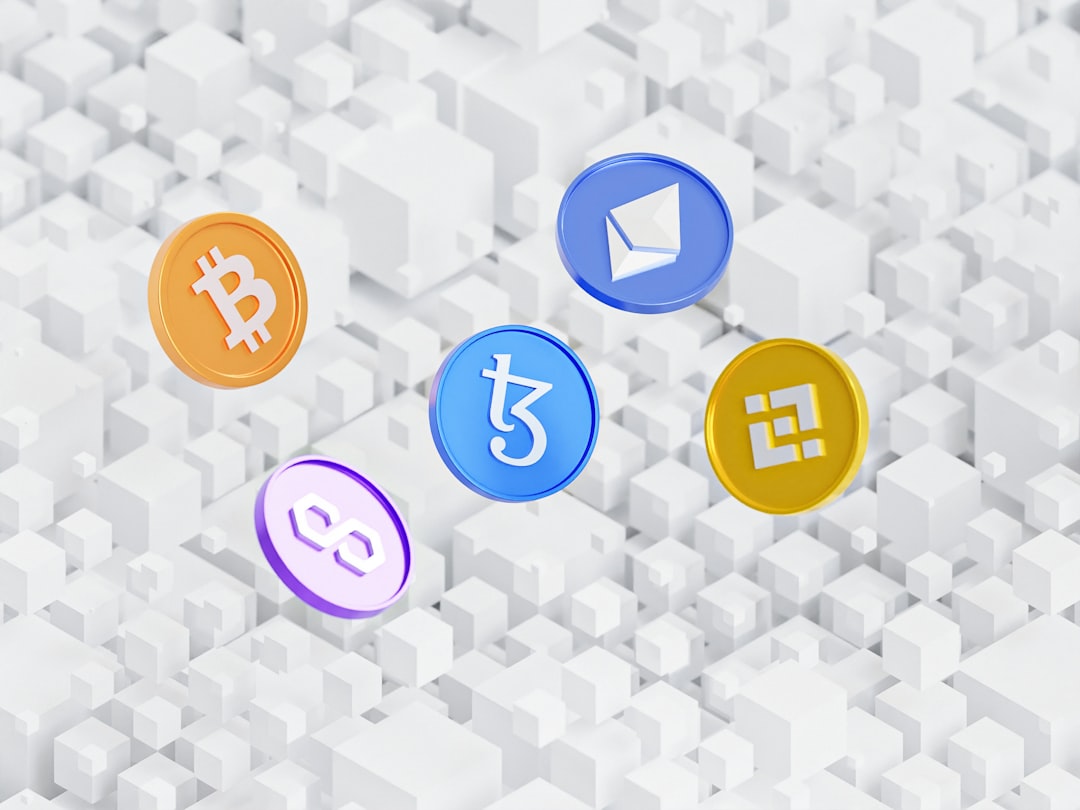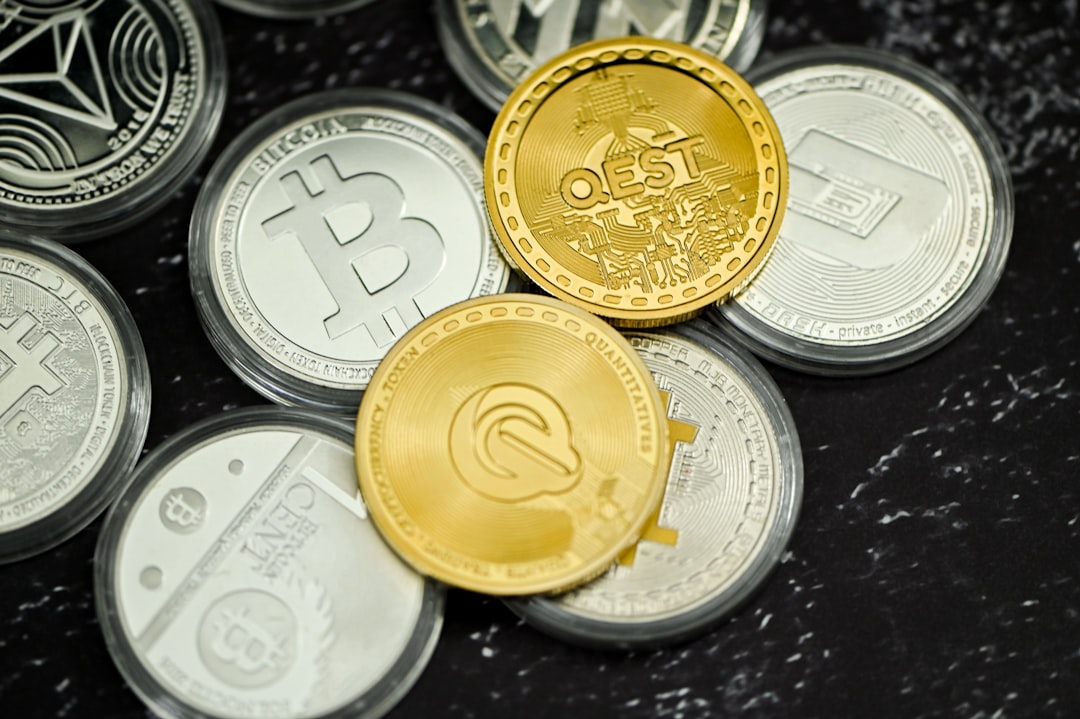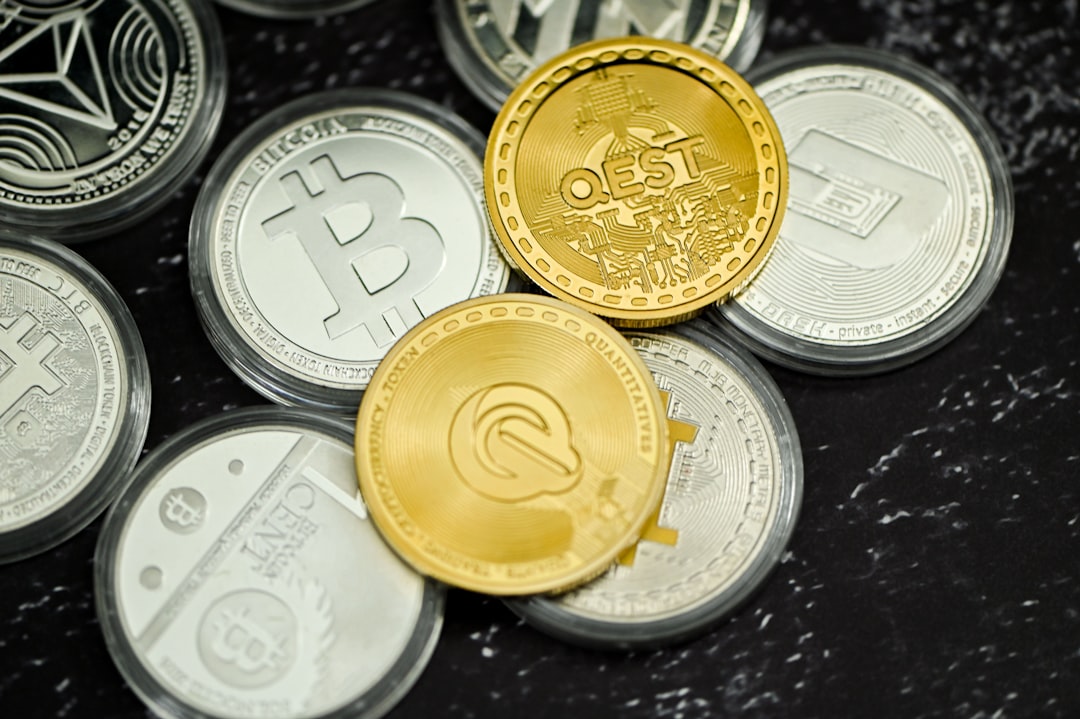NFT Marketplace Valuations A Deep Dive into OpenSea's $133 Billion Peak and Subsequent Market Shifts
NFT Marketplace Valuations A Deep Dive into OpenSea's $133 Billion Peak and Subsequent Market Shifts - OpenSea's $3 Billion Valuation Rise in January 2022
OpenSea's valuation skyrocketed in January 2022, hitting $13.3 billion after securing a substantial $300 million Series C funding round. This represented a significant leap from its prior $1.5 billion valuation, a clear reflection of the booming NFT market at the time. The funding round, orchestrated by well-known investment firms, served as a validation of OpenSea's prominent position within the NFT space. The rapid growth, occurring just four years after its inception, was a testament to the burgeoning NFT sector's potential. OpenSea's ambitious plans to use the funds for improvements to the platform—including better product development, user support, and security—demonstrated a focus on maintaining its leadership. This rapid rise underlined not only OpenSea's success but also a wider trend of increasing recognition and investment in both NFTs and blockchain technology. It was a pivotal moment signaling the potential of these nascent technologies to transform digital economies.
In January 2022, OpenSea saw its valuation skyrocket to $13.3 billion, a substantial leap from its previous $1.5 billion valuation just a few months prior. This surge was directly tied to a $300 million Series C funding round, led by prominent investment firms like Paradigm and Coatue Management. This significant jump in valuation was largely due to the incredibly rapid growth of the NFT market as a whole, with 2021 seeing NFT sales explode to over $40 billion. OpenSea's position within this booming market was also a major driver, having captured a dominant 97% of the NFT marketplace volume in the early months of 2022.
This dominance, alongside a growing user base that surpassed 1 million unique wallet addresses, fueled the investor confidence that translated into the increased valuation. However, this wasn't without its challenges. OpenSea's dependence on Ethereum, while aligning with the NFT sector's initial development, also highlighted the issue of gas fees, which negatively impacted the user experience. Furthermore, the emergence of competing marketplaces like Rarible and Nifty Gateway indicated a changing landscape, questioning the sustainability of OpenSea's early market leadership.
The hefty valuation, though impressive, also signaled a look towards the future potential of NFTs, with discussions swirling around the possibilities for NFTs within various sectors such as gaming, music, and real estate. This surge in valuation and attention naturally prompted questions about OpenSea's long-term viability, especially concerning its reliance on transaction fees amidst a volatile and rapidly evolving marketplace. Adding to the complexities, the rise of NFT marketplaces like OpenSea brought increased regulatory scrutiny, focusing on the authenticity and ownership of digital assets. This period saw a marked increase in venture capital investment in NFT startups, prompting an evaluation of whether such fervent interest could be sustained in the face of fluctuating market dynamics. It was a time of incredible opportunity and potential risk within the nascent NFT sector.
NFT Marketplace Valuations A Deep Dive into OpenSea's $133 Billion Peak and Subsequent Market Shifts - NFT Market Boom Driving OpenSea's Growth in 2021
The NFT market exploded in 2021, transitioning from a roughly $40 billion valuation at the start of the year to a staggering $42 billion in total spending by its end. This surge in activity propelled OpenSea, a leading NFT marketplace, into the spotlight. Its valuation surged dramatically, rising from $1.5 billion in July to an impressive $13.3 billion by December 2021. A major factor driving this growth was OpenSea's transaction volume, reaching $3.4 billion in August 2021, a tenfold increase from the previous month.
High-profile NFT sales, like the $69.3 million Beeple artwork auctioned at Christie's, significantly raised the public profile of NFTs and spurred increased investor interest in digital assets. OpenSea's growth mirrored the broader NFT market boom but also hinted at potential challenges ahead. The burgeoning competition from other NFT marketplaces and increasing regulatory attention posed questions about the long-term viability of such rapid growth. This period of explosive growth set the stage for future discussions concerning the integration of NFTs into various sectors and the ongoing evolution of this burgeoning digital landscape.
The NFT market's explosive growth in 2021, from a relatively modest valuation of around $40 billion at the start of the year to a staggering $42 billion in total spending by the end, was a remarkable phenomenon. This surge in interest and spending was mirrored in the trajectory of OpenSea, a leading NFT marketplace that quickly established itself as a dominant player. By the close of 2021, OpenSea controlled a vast majority of the NFT marketplace, handling about 97% of the total transaction volume. This dominance highlighted the platform's crucial role in shaping the emerging landscape of digital assets.
Throughout 2021, we saw a clear shift in the perceived value of NFTs. What started with sales in the low hundreds of dollars rapidly escalated to transactions reaching into the thousands, indicating an increasing belief in the collectibility and intrinsic worth of these digital assets. OpenSea's reliance on Ethereum for transactions, however, brought into focus the limitations of this specific blockchain. Ethereum's increasing congestion and substantial gas fees became a significant hurdle for some users, prompting explorations of alternative blockchain platforms.
This era of the NFT boom was marked by some eye-catching, and sometimes controversial, examples. The $69.3 million sale of Beeple's "Everydays" artwork at Christie's grabbed widespread media attention, showcasing the growing recognition of NFTs in both the art world and broader society. We also witnessed an increased presence of celebrities and high-profile individuals entering the NFT space, driving both the platform's visibility and the overall interest in NFTs.
The ease of minting NFTs led to a mixed bag of outcomes. While creators could quickly produce novel digital art and content, some users, lacking sufficient understanding, also stumbled into copyright infringement disputes as the legal landscape of intellectual property within digital assets struggled to catch up. OpenSea, fueled by the NFT surge, saw a rapid expansion in user base, exceeding one million unique wallet addresses by January 2022. This rapid growth, while positive for the platform, also brought into focus potential vulnerabilities within the platform. Security breaches and the issue of hacked accounts highlighted inherent risks in using digital wallets, particularly in a nascent industry.
The remarkable rise of OpenSea and the NFT market overall prompted significant discussion about the potential implications for regulation. Government agencies and financial institutions started to evaluate how digital assets fit into the existing frameworks for taxation, consumer protection, and other related areas. The 2021 boom period, therefore, was a crucial point for the entire NFT space, a time of great opportunity and risk, and a testament to the growing recognition and investment in both NFTs and blockchain technologies.
NFT Marketplace Valuations A Deep Dive into OpenSea's $133 Billion Peak and Subsequent Market Shifts - OpenSea's Dominance in the NFT Marketplace Landscape
OpenSea's prominent position within the NFT marketplace is undeniable, especially given its remarkable $13.3 billion valuation peak in early 2022. This surge was a direct result of the rapid expansion of the broader NFT market, where OpenSea held a commanding 97% of the transaction volume. However, the NFT market's subsequent downturn, with global sales dropping a significant 63% in 2022, has placed considerable pressure on OpenSea's dominance. New competitors have entered the field, and the overall market is shifting, challenging the sustainability of OpenSea's past success. While it remains a major platform for buying and selling digital assets, the changing environment has introduced new obstacles for the platform. As the NFT space evolves and matures, OpenSea faces the challenge of adapting and innovating to preserve its leading role.
OpenSea's journey since its founding has been marked by remarkable growth and a period of peak dominance in the NFT space. By early September 2024, the platform had facilitated over $42 billion in transactions, solidifying its position as the largest NFT marketplace, despite a downturn in activity after 2021's explosive growth. While holding a commanding 97% of transaction volume at its peak, OpenSea has faced an uphill battle against newer platforms that have chipped away at its market share, pushing OpenSea to adapt with fee adjustments and platform innovations.
OpenSea's close ties to the Ethereum blockchain, while beneficial initially, have presented challenges. Ethereum's tendency towards network congestion during high-activity periods has resulted in significantly inflated gas fees, which has deterred some creators and collectors, driving them towards platforms built on other blockchains. This issue was evident in 2022 when the average NFT sale price on OpenSea touched nearly $4,000 before falling substantially a year later, mirroring the volatility seen across the entire NFT market.
The rapid expansion of the NFT market in 2021 attracted an influx of users to OpenSea, exceeding one million unique wallet addresses. This quick growth, however, was accompanied by growing concerns about security and account integrity, as the platform saw a significant rise in hacking attempts. OpenSea's $13.3 billion valuation in early 2022, while showcasing the massive potential of the platform, also raised questions about its long-term financial prospects. Its primary revenue model, based on transaction fees, has been tested in a market characterized by sharp fluctuations and rapid change.
The emergence of OpenSea and other NFT platforms has highlighted the pressing need to adapt existing legal frameworks for intellectual property. Copyright and authenticity concerns in the digital asset space have presented substantial challenges for the legal system to grapple with, forcing a reassessment of the traditional understanding of ownership. While OpenSea's initial success was undeniably significant, the decline in market share that followed highlights the dynamic nature of the NFT market and the difficulty of sustaining dominance in a competitive environment.
OpenSea has implemented measures to adapt to the changing dynamics of the market. For instance, integrating other blockchains like Solana and Polygon aimed to address user concerns about Ethereum gas fees. This proactive approach suggests a commitment to addressing users' evolving needs and incorporating new blockchain technologies into the platform. The flood of venture capital funding into the NFT sector in 2021, of which OpenSea was a significant beneficiary, brought a surge in investment. However, the question remains whether this intense interest can be maintained given the subsequent market corrections, suggesting a more cautious outlook towards the industry's future.
NFT Marketplace Valuations A Deep Dive into OpenSea's $133 Billion Peak and Subsequent Market Shifts - 90% Valuation Drop to $3 Billion by November 2023
By November 2023, OpenSea's valuation had experienced a staggering 90% drop, falling from a peak of roughly $13 billion down to a mere $3 billion. This sharp decline reflects the broader NFT market's downturn, which has seen transaction volumes significantly decrease since early 2022. Previously boasting a peak valuation of $133 billion, OpenSea's drastic decrease has sparked concerns about the platform's future viability in a fiercely competitive environment. The NFT market's inherent volatility and shifting user tastes have created headwinds for OpenSea, leading to a reevaluation of its long-term prospects. As the NFT space navigates these turbulent waters, the consequences for established marketplaces like OpenSea are becoming increasingly clear, highlighting the ongoing challenges and uncertainties within the industry.
By November 2023, OpenSea's valuation had plummeted by a remarkable 90%, falling from its peak of $13.3 billion in early 2022 to a mere $3 billion. This sharp decline starkly illustrates the inherent volatility within the NFT market, especially as the initial hype and speculation around digital assets cooled down. It's a reminder that valuations in this sector can be quite fluid, influenced by shifts in investor confidence and the overall market environment.
Initially, OpenSea held a commanding position, handling a whopping 97% of NFT transaction volume. However, the emergence of competing NFT marketplaces and a general downturn in the overall NFT market eroded OpenSea's dominance. This shift in the landscape highlights the rapid pace of change within the digital asset space and the challenges faced by platforms striving to maintain a leading position.
OpenSea's reliance on the Ethereum blockchain, while a cornerstone of its initial success, also presented challenges. The increasing congestion on the Ethereum network translated into higher gas fees, which in turn discouraged some users and pushed them toward other platforms built on different blockchains. This dependence has forced OpenSea to consider its strategy for future growth and expansion in the face of user preferences and the rise of alternatives.
OpenSea's user base surged, exceeding one million unique wallet addresses at its peak. However, this rapid growth unfortunately coincided with a rise in security concerns, as malicious actors targeted the platform with increased frequency. The security breaches brought into sharp focus the vulnerabilities within the NFT space and raised questions regarding the reliability of digital wallets in this new environment.
The average selling price of NFTs on OpenSea reached almost $4,000 in 2022 before experiencing a significant drop. This decline mirrored the wider downturn in the NFT market and underscored the speculative nature of the entire industry, hinting at a potentially inflated price structure in previous periods.
The increased popularity of NFTs naturally drew regulatory attention. Authorities began to scrutinize the sector, particularly regarding intellectual property rights, authenticity, and consumer protection. This regulatory scrutiny has added another layer of complexity to the landscape of NFT platforms, requiring them to carefully navigate compliance issues while operating within existing legal frameworks.
Despite the substantial valuation decrease, OpenSea was able to leverage the substantial venture capital funding it secured to adapt its strategy. This funding enabled the platform to explore options like integrating alternative blockchains, like Solana, aiming to address user needs and maintain competitiveness in the changing market.
The rise of NFTs fundamentally altered societal perceptions of ownership and value in the digital sphere. This shift into a new realm of digital ownership and creation introduced complex issues concerning intellectual property, challenges that continue to impact the entire NFT ecosystem.
The overall decrease in global NFT sales, which saw a staggering 63% decline in 2022, impacted OpenSea’s valuation. This decline in investor confidence and market activity suggests a broader adjustment within the industry, away from the speculative boom that propelled OpenSea and other NFT platforms to prominence in earlier years.
The gaming sector has presented a promising avenue for NFTs, particularly for creators seeking to engage players and offer them unique digital content. However, this area also sees a lot of competition, reminding platforms like OpenSea that staying ahead requires ongoing innovation and adapting to a shifting set of market demands.
In essence, the story of OpenSea’s rapid rise and subsequent valuation decline serves as a cautionary tale about the volatile nature of NFT markets and the challenges inherent in navigating a rapidly evolving digital landscape. While OpenSea remains a major player, the platform's experience emphasizes the need for flexibility, adaptability, and a keen awareness of market shifts in this dynamic sector.
NFT Marketplace Valuations A Deep Dive into OpenSea's $133 Billion Peak and Subsequent Market Shifts - OpenSea's $400 Million Total Funding Journey
OpenSea's journey to amass a total of $400 million in funding highlights a rollercoaster ride within the NFT landscape. The platform experienced a meteoric rise in early 2022, achieving a valuation of $13.3 billion after securing a significant $300 million investment in a Series C round. This surge mirrored the broader NFT market's explosive growth, placing OpenSea at the forefront of the sector. However, the NFT market's subsequent downturn significantly impacted OpenSea, resulting in a drastic 90% reduction in valuation to just $3 billion by late 2023. This rapid shift demonstrates the inherent volatility and inherent uncertainty within digital asset markets, where rapid growth can quickly give way to a sharp decline. While the funding initially propelled OpenSea to a dominant position, the platform's continued success remains uncertain amidst a changing market and a wave of new competitors. The future of OpenSea rests on its ability to adapt to fluctuating investor sentiment and evolving user demands within this dynamic space.
OpenSea's journey to secure a total of $400 million in funding was remarkably quick, accomplished within a mere two years. This rapid influx of capital underscores the strong interest from investors in the NFT space during its initial surge in popularity. Funding came from a diverse group of sources, including venture capital firms and angel investors, with well-known names like a16z and Y Combinator involved. This widespread interest highlights a broader belief within the tech community regarding the potential of digital assets.
Prior to the substantial $300 million Series C funding round, OpenSea had only garnered $68 million across four funding rounds. This shows that the platform's valuation surge wasn't a gradual process but rather a pivotal moment triggered by market forces.
Despite its impressive peak valuation, OpenSea's market share has significantly decreased, dropping from a commanding 97% in early 2022 to roughly 30% by late 2023. This decline highlights the increasing competition within the NFT space, presenting a serious challenge to the platform's future. The enormous valuation of $13.3 billion in January 2022 stands in sharp contrast to OpenSea's revenue model, which mainly relies on transaction fees. This reliance raises questions about long-term sustainability, particularly during market downturns when transaction volume decreases.
The platform's transaction volume experienced a dramatic increase, reaching $3.4 billion in August 2021, but subsequently faced a major downturn. In 2022, global NFT sales plummeted by 63%, which not only impacted OpenSea's revenue but also cast doubt on user retention rates.
OpenSea's initial reliance on the Ethereum blockchain provided advantages, but Ethereum's network congestion and high gas fees became a notable drawback. As users shifted to alternative platforms, this dependency became a threat to OpenSea's future growth.
The rapid increase in OpenSea's user base, exceeding one million unique wallet addresses, unfortunately coincided with an increase in security concerns. Numerous hacking attempts exposed vulnerabilities in the NFT transaction security infrastructure, affecting user trust in the wider ecosystem.
The NFT boom has attracted attention from regulatory bodies who are focusing on areas like intellectual property and consumer protection. OpenSea's experience underscores the need for clearer regulatory frameworks, which could significantly influence operations in the NFT market.
The valuation trends of OpenSea mirror the broader digital asset market's tendency towards volatile asset values. As the initial enthusiasm surrounding NFTs wanes, the focus is shifting towards reassessing what constitutes value in the digital asset space. This process is likely to continue shaping the NFT market going forward.
NFT Marketplace Valuations A Deep Dive into OpenSea's $133 Billion Peak and Subsequent Market Shifts - Market Volatility and Changing Investor Sentiment in NFTs
The NFT market's journey has been characterized by dramatic swings in investor interest and valuation, showcasing the volatility inherent in this relatively new asset class. After a period of explosive growth, the NFT market, including prominent platforms like OpenSea, experienced a sharp decline in valuations. OpenSea's valuation, once reaching an estimated $133 billion, has since fallen by a significant percentage, emphasizing the fragility of investor sentiment and the susceptibility of NFT markets to rapid shifts in enthusiasm.
Investor behavior in this market seems especially sensitive to the prevailing tone and discussions on social media, amplifying the impact of news and speculation on trading activity. Additionally, increased regulatory scrutiny and a series of market corrections have further influenced trading volumes and asset pricing. While the NFT market has cooled from its initial peak, there's a continued interest in specific areas, including applications in gaming and digital collectibles. These areas may represent opportunities for innovation and, potentially, future growth in the NFT ecosystem.
Successfully maneuvering in this environment requires recognizing the inherent volatility and quickly adjusting to changes in user expectations and preferences. The NFT market's future remains somewhat unclear, contingent upon the development of new use cases, the resolution of regulatory uncertainties, and a potential resurgence of widespread investor interest.
The NFT market's growth from 2020 to 2021, with daily trading volumes exploding from a modest $180,000 to a significant $38 million, was remarkable. This surge, exemplified by OpenSea's peak valuation of $133 billion, highlights the influence of investor sentiment, particularly from individual traders. Social media chatter and news cycles significantly impact NFT prices and trading volume. Analyzing over 5 million English-language tweets about NFTs showed a direct relationship between sentiment and trading activity, illustrating the power of online discussions.
The NFT market's volatility is rooted in rapid shifts in investor interest and asset values, shaped by external factors and evolving trends. While valuations fluctuate, the potential applications of NFTs and ongoing technological advancements continue to show promise. The high returns reported by some NFT traders in 2021 raise questions about the broader returns from investing in this space. The NFT market is inextricably linked to the wider cryptocurrency market, meaning fluctuations in sentiment within fintech and DeFi directly affect NFTs.
We've observed recurring patterns of excitement and subsequent market adjustments, illustrating the cyclic nature of interest within the NFT realm. These shifts are fueled by a mixture of societal trends and technological breakthroughs. This cycle can be seen in the boom-and-bust nature of various projects as well as the market’s reaction to broader events such as new developments in the crypto world. While the future remains uncertain, understanding the forces driving investor behavior and the underlying technologies will be crucial to navigating this ever-changing landscape.
More Posts from cryptgo.co:
- →Dogecoin Price Analysis DOGE Maintains 9th Rank Despite 85% Drop from All-Time High
- →Green Satoshi Token (GST) Shows 281% Price Increase Amidst Market Volatility
- →Bitcoin's Commodity Status Implications for Regulation and Trading in 2024
- →Judge Analisa Torres A Legacy of Judicial Excellence and Landmark Rulings
- →BlackRock's Bitcoin ETF Surpasses 500,000 BTC Milestone Analysis of Institutional Adoption Impact
- →SEC Issues Wells Notice to Robinhood Crypto Operations Under Scrutiny




